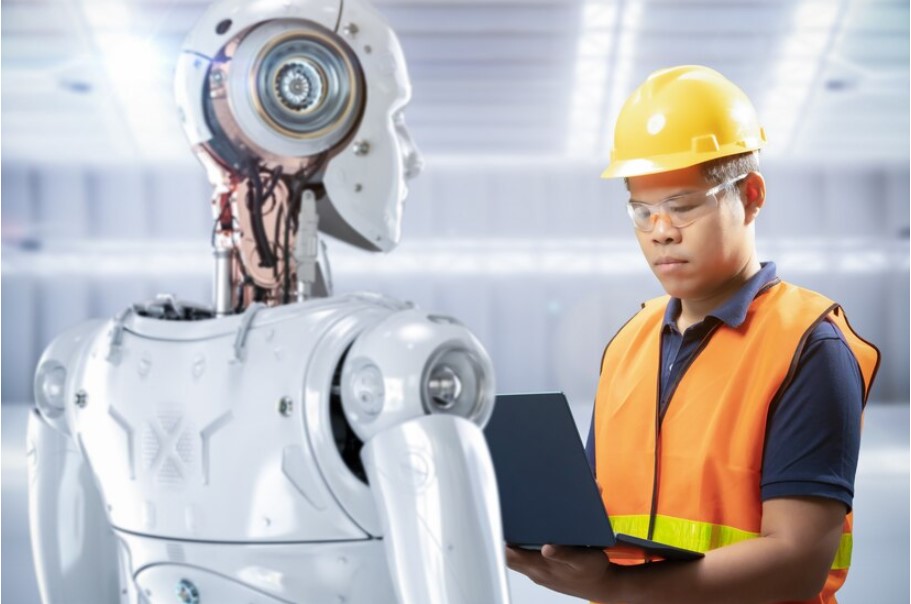Robotics for manufacturing is a rapidly growing field combining the latest technological advancements with traditional production processes. Robots become increasingly sophisticated and more vulnerable to cyber-attacks and breaches. Cybersecurity is essential for protecting robotic systems from malicious activity and ensuring the integrity of data stored on these systems. This article will discuss the importance of cybersecurity in robotics for manufacturing and outline best practices for keeping robotic systems safe from attack.
The Importance of Cybersecurity
Cybersecurity protects electronic devices, computer networks, and sensitive digital information from unauthorized access, theft, or damage. With the increasing use of technology in our daily lives, cybersecurity has become more important than ever before. The vast amount of personal and confidential information stored in digital format has made it a target for cybercriminals constantly finding new ways to steal and exploit this information for their own gain.
Cybersecurity is crucial to safeguarding data privacy and maintaining the integrity of digital systems. It helps to prevent unauthorized access, data breaches, and cyber-attacks, which can lead to significant financial losses, reputational damage, and legal liabilities. Cybersecurity is essential for individuals, businesses, and governments to protect their sensitive information, maintain the trust of their customers, and ensure the reliability and functionality of any critical infrastructure.
In today’s digital age, cybersecurity is a constantly evolving field, and the threats to digital security are becoming more complex and sophisticated. Cybersecurity measures must be continuously updated to keep pace with these threats and maintain digital systems’ integrity. This includes implementing secure authentication methods, regularly updating software and applications, using encryption to protect sensitive data, and deploying strong firewalls and antivirus software.
Cybersecurity is essential for protecting electronic devices, computer networks, and sensitive digital information from unauthorized access, theft, or damage. It is important to implement strong cybersecurity measures to safeguard data privacy, maintain the integrity of digital systems, and protect against cyber-attacks.
Robotics in Manufacturing
Robots in manufacturing environments have allowed businesses to automate tedious tasks, improve safety, increase efficiency, and reduce costs. With this rise in automation comes a heightened risk of potential cyber-attacks on these systems. Malicious actors could access sensitive data or disrupt operations by disabling or manipulating robots. Cybersecurity is essential for safeguarding against these threats and ensuring data integrity stored on robotic systems.
Best Practices for Cybersecurity in Robotics for Manufacturing
- Implement Robust Access Controls and Authentication Processes: The first step in ensuring effective cybersecurity is implementing robust access controls and authentication processes. Access controls can limit who has access to specific robotic operations or data, while authentication helps ensure only authorized users are accessing the system. This could include user-based authentication, multi-factor authentication, and even biometric authentication techniques to verify user identity. Additionally, organizations should use encryption techniques to protect confidential information from unauthorized access. Encryption scrambles the underlying data so that it cannot be read without a unique key or algorithm. This helps prevent cybercriminals from reading sensitive information, even if they gain unauthorized access to a system’s files.
- Deploy Strong Firewalls and Antivirus Software: Organizations should also deploy strong firewalls and antivirus software to detect and block malicious activity. Firewalls provide additional protection by blocking unauthorized access to a system, while antivirus software can detect malicious files and other suspicious activities. By using updated and effective antivirus software, businesses can prevent malicious code from gaining access to robotic systems.
- Conduct Regular Security Audits: Additionally, organizations should conduct regular security audits to identify potential exposures or vulnerabilities. Regular audits allow organizations to stay ahead of threats and ensure their systems are properly protected. This includes reviewing logs and implementing intrusion detection and prevention systems to identify unusual activity and prevent unauthorized access.
- Educate Staff on the Importance of Cybersecurity: Finally, it is important for organizations to educate their staff on the importance of cybersecurity in robotics for manufacturing. This includes teaching employees about best practices for safe data management, such as regularly changing passwords and avoiding downloading potentially dangerous files or programs from unknown sources. By educating staff on these topics, businesses can create a culture of security that helps protect robotic systems from attack and keep confidential information secure.
Conclusion
In conclusion, cybersecurity is essential for protecting robotic systems used in manufacturing from malicious activity and ensuring the integrity of data stored on these systems. Organizations must implement robust access controls, authentication processes, encryption techniques, firewalls, antivirus software, and regular security audits to keep their robotic systems safe from attack. Additionally, staff should be educated on the importance of cybersecurity and best practices for safe data management. By following these steps, businesses can ensure their robotic systems remain secure and their confidential information remains protected.
 seolounge
seolounge